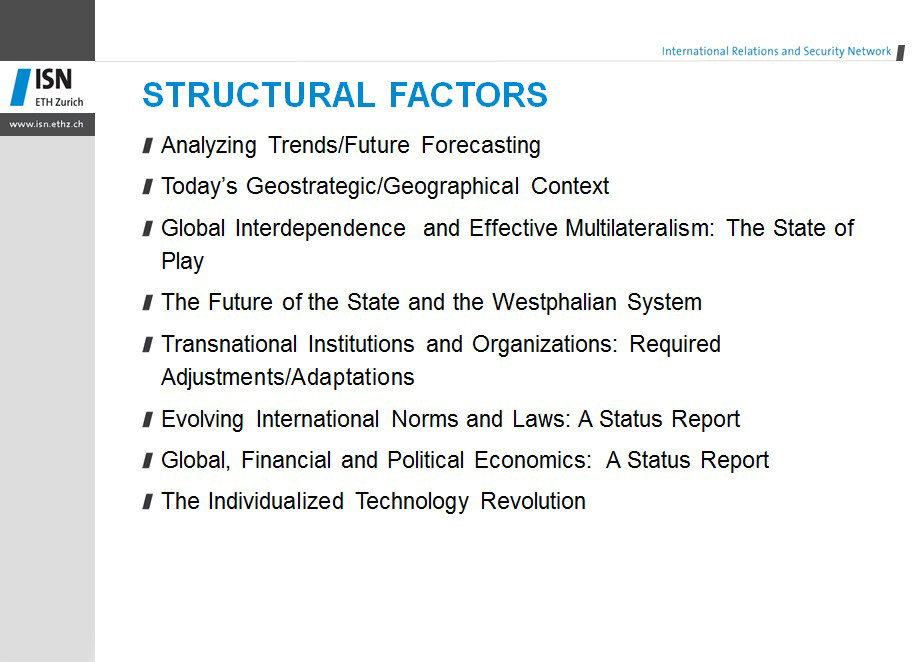
Dear Colleagues:
Last week we embarked upon the three-part Editorial Plan we would like to explore on the ISN website in the weeks and months ahead. Our first broad area of inquiry will be on the macroscopic structural changes we are experiencing in the international system. To analyze this large-scale topic properly, over the next 14 weeks we plan on exploring the 8 supporting sub-topics we identified in Part 1 of the General Introduction, including what many have come to call “futurology”.
 |
Future Forecasting has always been a controversial topic, especially when it relates to structural change. In fact, if unprecedented political, economic and socio-cultural changes are occurring at the global level, which we at ISN believe is the case, then several questions immediately follow. What are these changes and where are they taking us? How do we expect these trends to evolve? Finally, what changing or new political dynamics do we expect to dominate our near-, mid-, and long-term world? We hope to answer these questions and others over the first two weeks of our Editorial Plan. To do this properly, however, there will be a Part A and a Part B to our efforts.
This week represents Part B. After first looking at two different approaches to short-term forecasting, which we’ll do today, we’ll then look at how futurologists are envisioning the medium and long-term shape of the international system. Finally, we’ll wrap up this week by providing an ‘insider’s view’ of some of the problems associated with future forecasting. After looking at these broader challenges and issues, next week we’ll begin considering how effectively, or not, traditional geopolitical discourse helps explain the structural changes occurring throughout the international system. Does this discourse still have explanatory power or not?
We’ll try and address that question next week, but first things first. Is practical future forecasting – near-term, mid-term, and long-term – helpful in identifying the contours of structural change or is the effort no better than a role of the dice? Also, how plausible are the future forecasts we collectively create? Please read on for some possible answers.

